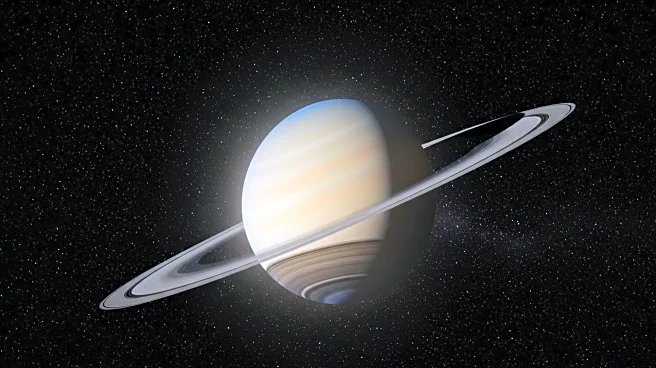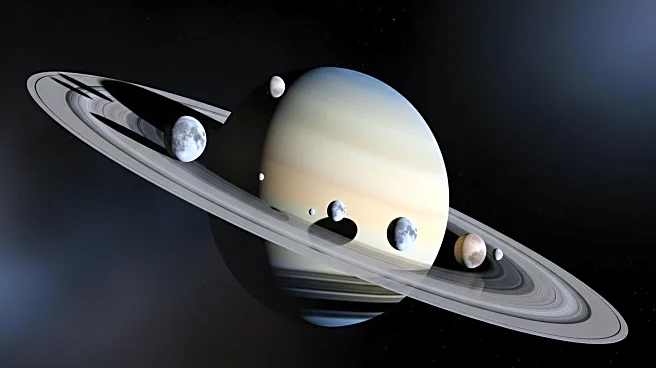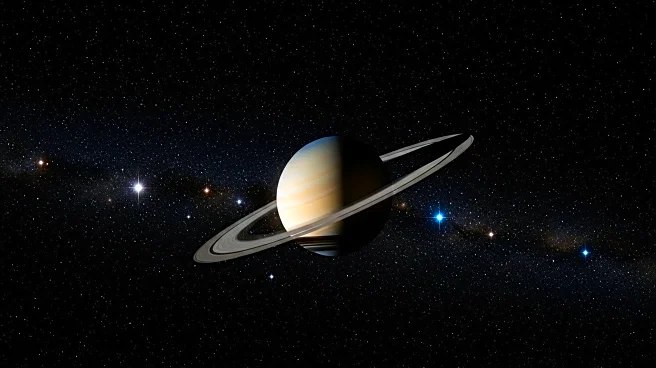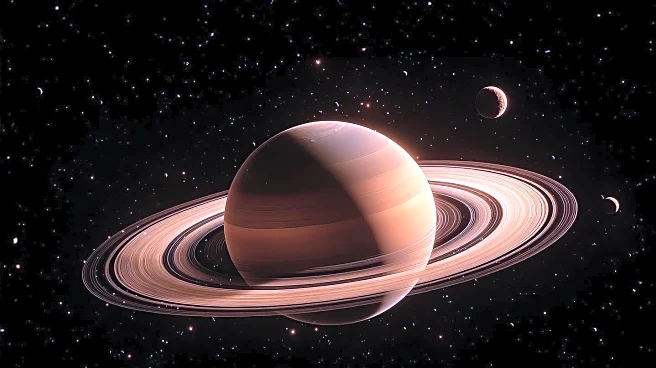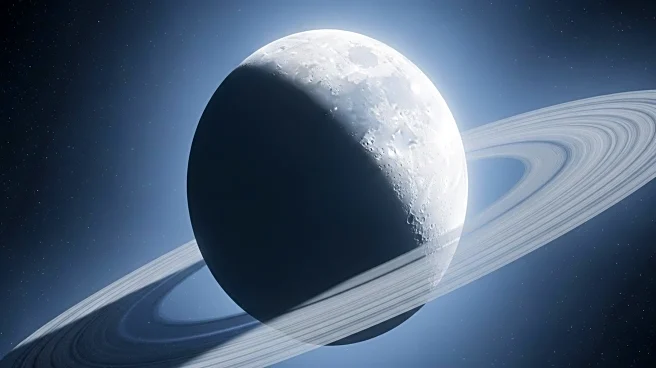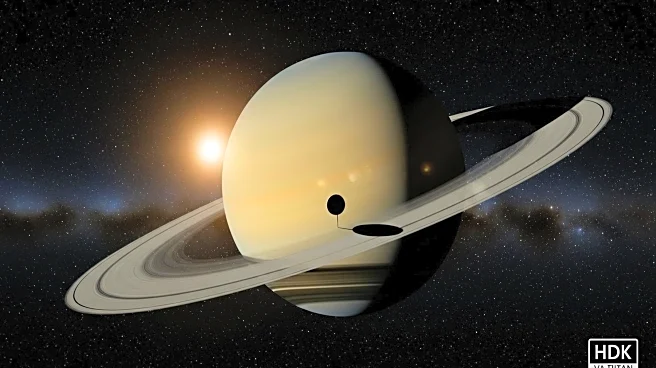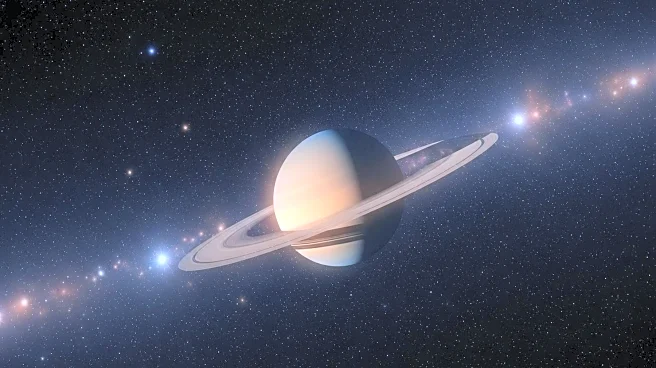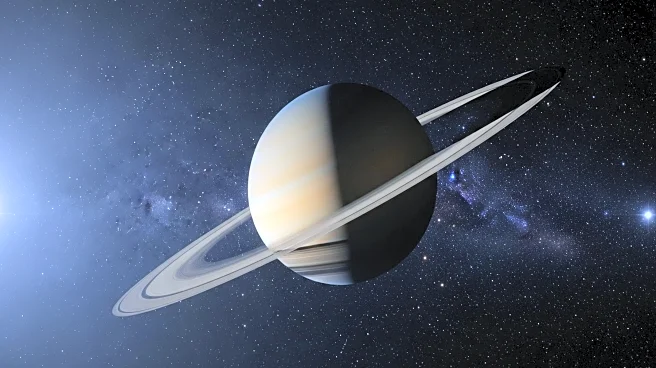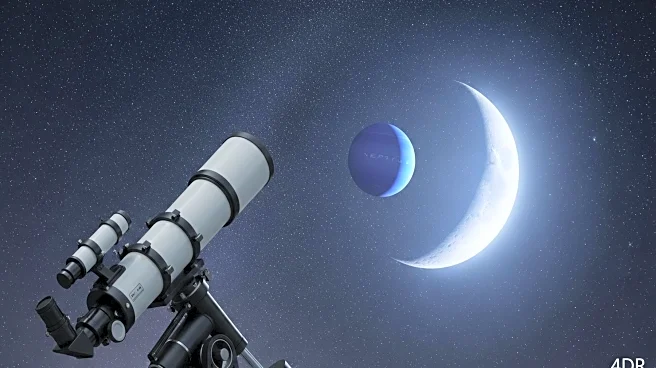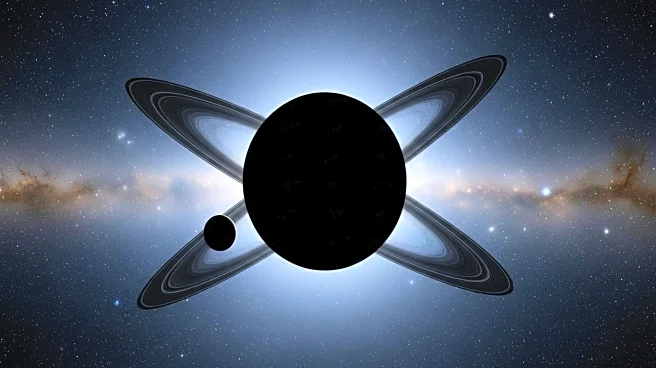What's Happening?
Saturn has reached opposition today, September 21, 2025, providing optimal viewing conditions for its rings and moons. At opposition, Saturn is visible all night, rising around sunset and reaching its highest point around local midnight. The planet shines at magnitude 0.6 in Pisces, near the Circlet asterism, with its rings appearing nearly edge-on due to their tilt. Observers can view Saturn's largest moon, Titan, along with smaller moons like Rhea and Dione. Tethys will undergo an occultation behind Saturn around 2:45 a.m. EDT. Neptune, located 2.6° from Saturn, is approaching its own opposition on September 23.
Why It's Important?
Saturn's opposition is a significant event for astronomers and skywatchers, offering a chance to observe the planet's rings and moons in detail. This event enhances understanding of Saturn's structure and dynamics, contributing to scientific knowledge about the solar system. For enthusiasts, it provides a unique opportunity to engage with astronomy and appreciate the beauty of celestial phenomena. The visibility of Saturn's moons adds to the excitement, allowing for detailed observations and potential discoveries.
What's Next?
Following Saturn's opposition, Neptune will reach its own opposition on September 23, offering another opportunity for observation. Astronomers and enthusiasts are likely to prepare for this event, which promises insights into the ice giant's characteristics. The upcoming opposition of Neptune will further enrich the astronomical calendar, providing continued engagement with the wonders of the night sky.

